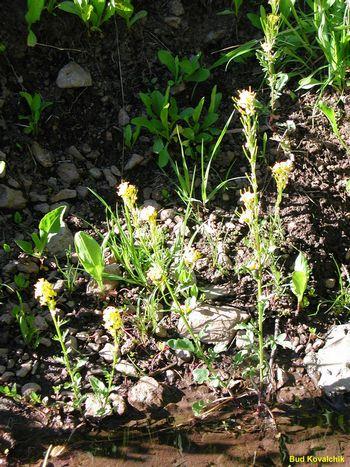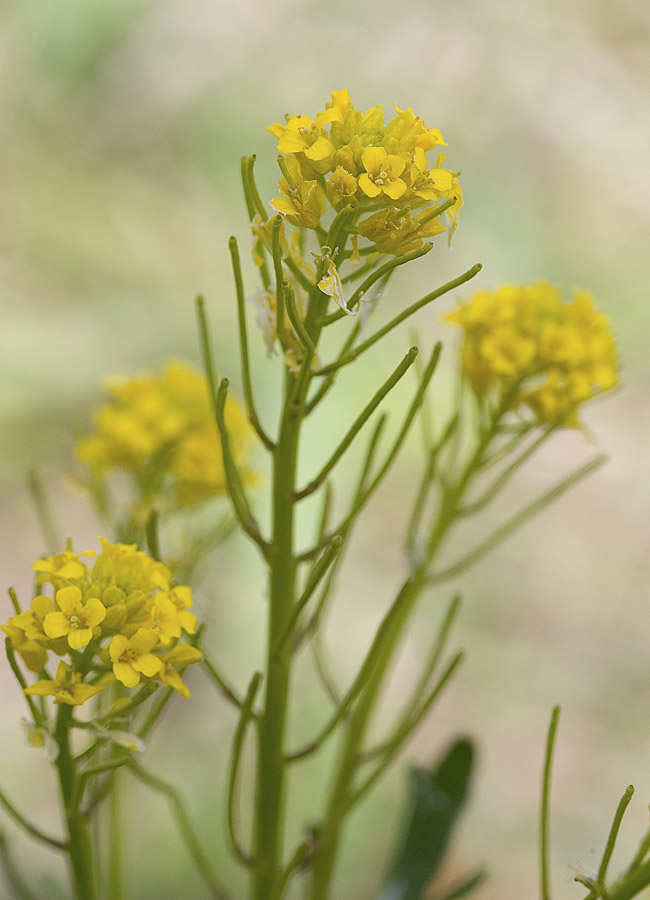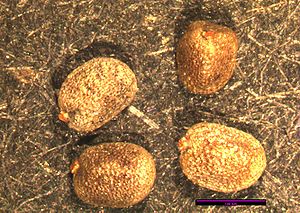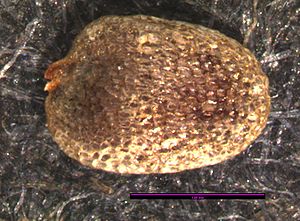Barbarea orthoceras
Contents
Taxonomy
SCIENTIFIC NAME: Barbarea orthoceras FAMILY: Brassicaceae ENGLISH NAME: American yellow-rocket, American wintercress
Description
General: Mostly glabrous biennial from a taproot and simple crown, the stems stiff, erect, angled, single but freely-branched, 2-6 dm. tall. Leaves: Basal leaves long-petiolate, up to 12 cm. long, the blade usually lyrate-pinnatifid to pinnate, the lateral lobes 8-10, entire to round-toothed, the terminal lobe ovate, entire or irregularly toothed, the petiole often with long, marginal hairs; cauline leaves alternate, similar to the basal but reduced upward, becoming simple and sagittate. Flowers: Inflorescence of compound or single and terminal racemes, with reduced racemes in the lower leaf axils; pedicles stout, 2-3 mm. long; sepals 4, pale yellowish-green, 2 mm. long; petals 4, yellow, spatulate-oblanceolate, 3-5 mm. long; stamens 6; style beak-like, 0.5-2 mm. long; stigma slightly lobed. Fruit: Siliques 1.5-5 cm. long and 1.5-2.5 mm. broad, slightly compressed, 4-angled, strongly 1-nerved full length, erect or strongly ascending, nearly straight.
Bloom Period
Distribution
Habitat
Uses
Propagation
Photo Gallery
References
Seed
Abbreviation: BAOR
Seed sample from: 2011
Average Measurement: 1.6 x 1.1 x 0.8
Measurement Range: L: 1.4 - 1.9, W: 1 - 1.3, D: 0.7 - 1
Features
Color: Hilum reddish and pinched looking. Seed is brownish red.
Surface:Some concave pitting on seed surface. Entire seed is covered with a net veined pattern giving it a scaly appearance. Seed is shiny.
Latitudinal Cross Section: elliptical ![]()
Longitudinal Cross Section: elliptical ![]()
Basic Explanations and Assumptions:
The dimensions for the seeds are length x width x depth. The location of the hilum is used as the base of the seed, and the length is measured from hilum to the opposite apex. Where a style is present, the length is measured from the hilum to the bottom of the style. Width is measured at a right angle to the length at the widest part. Depth is measured at a right angle to the intersection of height and width lines.
Measurements included are the mean average for each measurement of ten separate seeds.
All measurements in millimeters unless otherwise noted.




